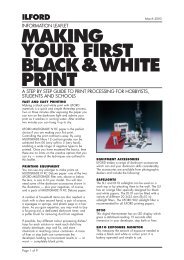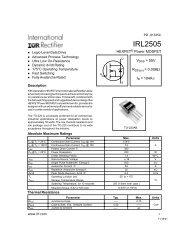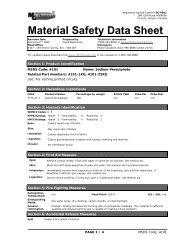SWITCHMODE⢠Power Supply Reference Manual
SWITCHMODE⢠Power Supply Reference Manual
SWITCHMODE⢠Power Supply Reference Manual
You also want an ePaper? Increase the reach of your titles
YUMPU automatically turns print PDFs into web optimized ePapers that Google loves.
SMPSRMSnubbers and ClampsSnubbers and clamps are used for two very differentpurposes. When misapplied, the reliability of thesemiconductors within the power supply is greatlyjeopardized.A snubber is used to reduce the level of a voltage spikeand decrease the rate of change of a voltage waveform.This then reduces the amount of overlap of the voltageand current waveforms during a transition, thus reducingthe switching loss. This has its benefits in the SafeOperating Area (SOA) of the semiconductors, and itreduces emissions by lowering the spectral content of anyRFI.A clamp is used only for reducing the level of a voltagespike. It has no affect on the dV/dt of the transition.Therefore it is not very useful for reducing RFI. It isuseful for preventing components such assemiconductors and capacitors from entering avalanchebreakdown.Bipolar power transistors suffer from current crowdingwhich is an instantaneous failure mode. If a voltage spikeoccurs during the turn–off voltage transition of greaterthan 75 percent of its VCEO rating, it may have too muchcurrent crowding stress. Here both the rate of change ofthe voltage and the peak voltage of the spike must becontrolled. A snubber is needed to bring the transistorwithin its RBSOA (Reverse Bias Safe Operating Area)rating. Typical snubber and clamp circuits are shown inFigure 27. The effects that these have on a representativeswitching waveform are shown in Figure 28.ZENERCLAMPSOFTCLAMPSNUBBERSNUBBERSOFTCLAMPZENERCLAMPFigure 27. Common Methods for Controlling Voltage Spikes and/or RFIVOLTAGE (VOLTS)CLAMPORIGINALWAVEFORMSNUBBERt, TIME (µsec)Figure 28. The Effects of a Snubber versus a Clamphttp://onsemi.com27













